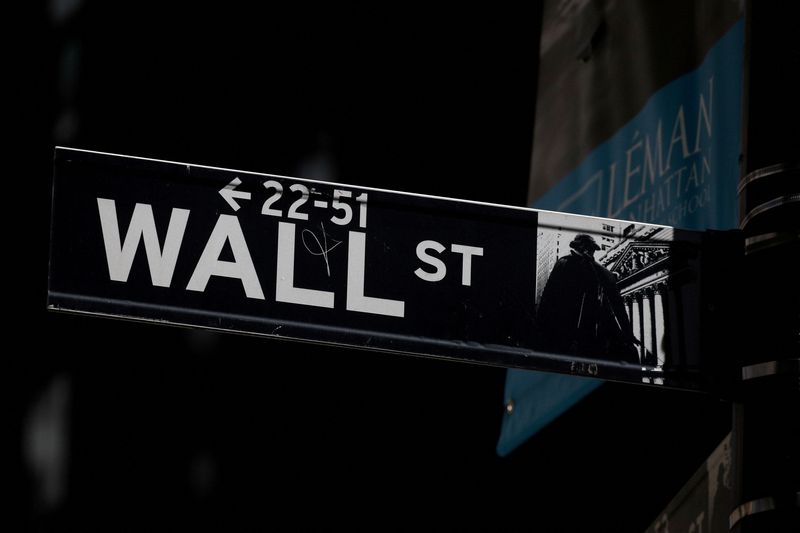By Echo Wang
(Reuters) -The S&P 500 and Nasdaq closed lower on Thursday, as market bellwether Nvidia (NASDAQ:NVDA) retreated from earlier gains, while investors evaluated recent economic data and commentary from Federal Reserve officials to determine the timing of interest-rate cuts this year.
Earlier, the S&P 500 hit the crucial 5,500-point mark for the first time ever, a year-end target multiple brokerages had forecast.
Nasdaq ended a seven-session streak of record closing highs.
Shares of Nvidia dropped 3.54% after rising earlier in the session. The chipmaker dethroned Microsoft (NASDAQ:MSFT) on Tuesday to become the most valuable public company.
Dell (NYSE:DELL) and Super Micro Computer (NASDAQ:SMCI) also declined 0.42% and 0.26% respectively after an initial increase, following news that they received server orders for Elon Musk's AI startup.
The number of Americans filing new claims for unemployment benefits declined last week, but the latest data showed that the overall number of people on benefits rolls reached the highest level since January, indicating that the U.S. job market continues to cool.
Another set of data showed U.S. single-family homebuilding fell in May amid continued high mortgage rates.
“The news that we got today was just another negative weakness in the economy”, said Tom Martin, senior portfolio manager at Globalt in Atlanta.
“In the employment report, you're getting those (unemployment) claims that are not terrible, but it's.. getting into a territory that's not low necessarily anymore."
Energy and utilities were biggest gainers among the 11 S&P 500 sector indexes, up 1.86% and 0.89% respectively, while technology led the decline.
“There's still a lot of noise in there about supply and demand still isn't really that strong. But there's just been.. a willingness to sort of come back to that area where we're going to be needing energy going forward,” said Martin.
Meanwhile, Minneapolis Fed President Neel Kashkari said it would take a year or two to get inflation back to 2%, as wage growth might still be too high, spurring worries of interest rates staying elevated for longer.
Money markets currently see a 58% chance of a 25-basis-point rate cut by the U.S. central bank in September, according to LSEG's FedWatch data.
The Dow Jones Industrial Average rose 299.90 points, or 0.77%, to 39,134.76, the S&P 500 lost 13.86 points, or 0.25%, to 5,473.17 and the Nasdaq Composite lost 140.64 points, or 0.79%, to 17,721.59.
Kroger (NYSE:KR) fell 3.27% after striking a cautious tone on near-term consumer spending, as it reaffirmed its full-year same-store sales and profit forecasts despite topping first-quarter estimates.
Trump Media & Technology Group tumbled 14.56% on potential equity dilution after the U.S. Securities and Exchange Commission declared effective the company's filing for a resale of certain shares and warrants, giving it about $247 million in proceeds.
Declining issues outnumbered advancers by a 1.03-to-1 ratio on the NYSE. There were 248 new highs and 118 new lows on the NYSE.

The S&P 500 posted 31 new 52-week highs and 6 new lows while the Nasdaq Composite recorded 39 new highs and 217 new lows.
Volume on U.S. exchanges was 11.98 billion shares, compared with the 13.51 billion average for the full session over the last 20 trading days.